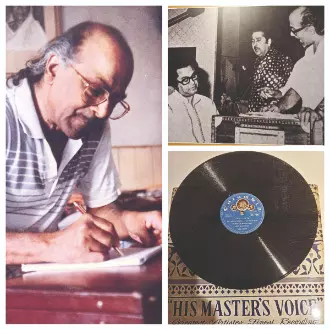Treasure trove: Salil Chowdhury centenary exhibition reveals diary entries, rare memorabilia

KOLKATA: From the pages of his personal diary in 1992 where he mentioned his refusal to accept the Padmashri to the eulogy he had penned when RD Burman passed away on January 4, 1994, the exhibition on Salil Chowdhury, celebrating the maestro’s centenary year, at the Kolkata Centre for Creativity is a treasure trove for all music connoisseurs.
Upon entering the exhibition, titled ‘Jibon Ujjibon’, visitors are greeted by a larger-than-life photograph of the ‘King of Melody.’ One of the key attractions is his Roland Keyboard DX5, used in all major recordings from 1980 onwards, along with his favourite harmonium, on which he composed iconic songs for Hemanta Mukhopadhyay, Manna Dey, and Lata Mangeshkar.
Born in Ghazipur in 24 Parganas on November 19, 1925, this child prodigy found his early influence in music from his father, Dr Gyanendra Chowdhury, a physician in the tea gardens of Assam and also a connoisseur of music and a nationalist. Through him, Chowdhury got his familiarisation with the world of western and Indian classical music as well as his political awakening. A budding composer, he joined student politics where his Leftist ideology ultimately led to his association with IPTA (Indian People’s Theatre Association). ‘O Alor Pothojatri’, ‘Amader Nanan Mote’, ‘Dhonno Ami’ — these Ganasangeet or mass songs are still revered today. In fact, during the British Raj, he had to go underground and post-Independence, he devoted full time to composing revolutionary songs.
Beyond composing, Chowdhury was a master orchestrator, a passion reflected in the exhibition, particularly in his founding of the Bombay Youth Choir in 1958.
Visitors can also explore original posters and rare booklets of his major hits like ‘Madhumita’ and ‘Sister’. Look out for the original RPM record of ‘Madhumita’, which includes Lata Mangeshkar’s ‘Aajare Pardesi’, as well as the 78 RPM Columbia Records release of ‘Runner’ (1951), a landmark composition based on Sukanta Bhattacharya’s celebrated poem.
Adding another dimension to the tribute, Chowdhury’s daughter, singer Antara Chowdhury, has organised seminar sessions where musicians, many of whom collaborated with or were inspired by the maestro, will share their insights.
“We plan to take the exhibition to Mumbai and Kerala and organise a centenary event there as well. Every year, we hope to hold instrumental and vocal workshops around this time,” she said. The exhibition will be open to visitors until April 5.



